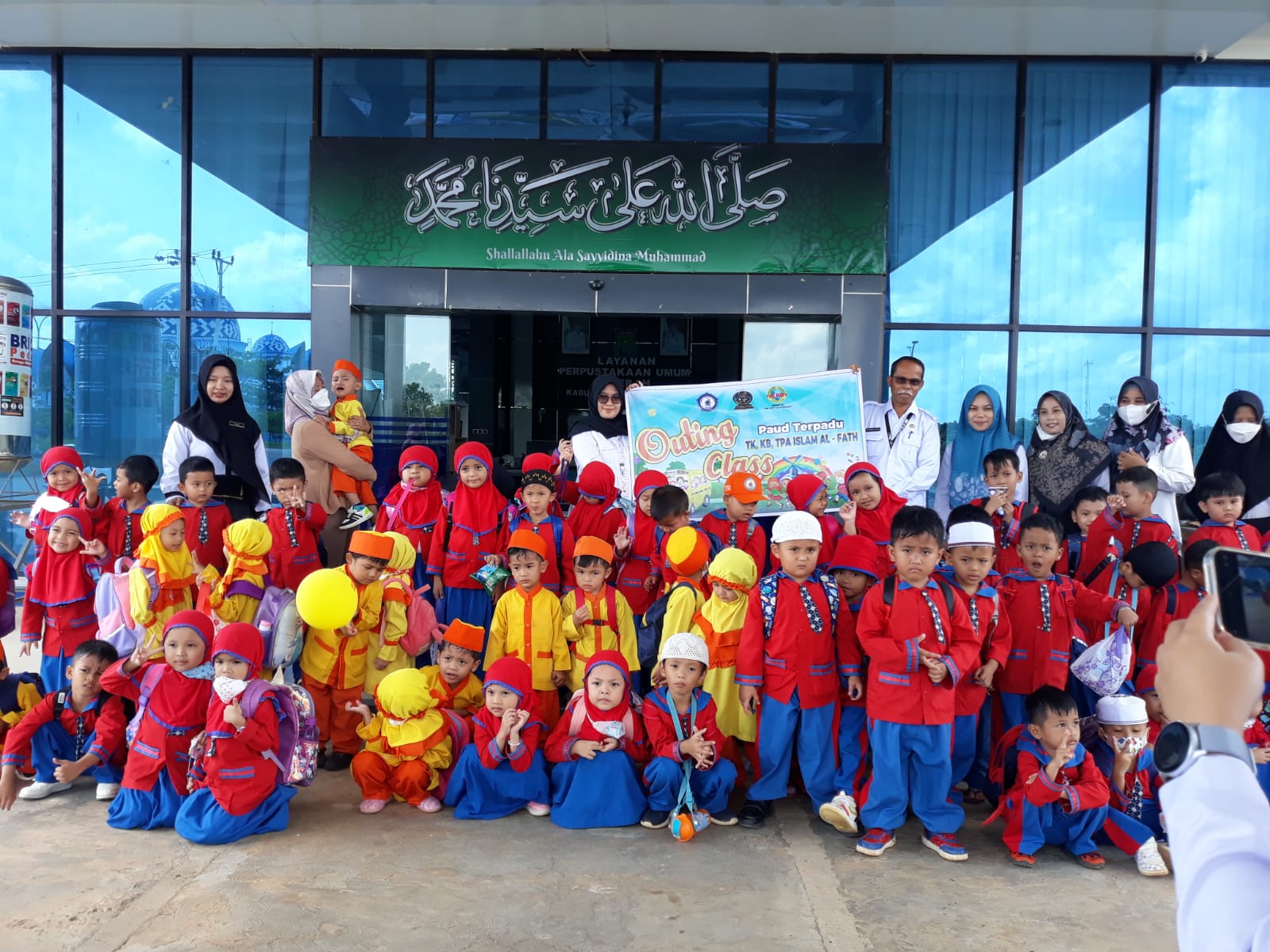The role of teachers in instilling religious character in children aged 5-6 years in kindergarten
Keywords:
Teacher’s Role, Religious Character, kindergarten, children aged 5-6 yearsAbstract
This study aimed to understand the role of teachers as educators and guides in implanting the religious character of five-year-old children and to examine the impact of this on group B children at TK Fathunintention. The research employed data collection methods such as observation, interviews, and documentation, with the data analysis following the techniques outlined by Miles and Huberman, which involved data condensation, data display, and verification. The study found that teachers played a pivotal role in implanting religious values through the use of breeding methods, which proved effective in shaping the religious character of the children. The results showed that, through these practices, children became capable of performing wudhu independently, memorizing short verses, correctly executing prayer movements, memorizing daily prayers, and reciting greetings. These practices not only enhanced the children’s religious knowledge but also contributed to their moral development and spiritual growth. It was clear that the teachers’ methods created a nurturing environment for the development of religious character, where the children could practice and internalize religious teachings in a meaningful way. Based on these findings, it was recommended that other institutions adopt similar structured methods to foster religious character, ensuring the integration of religious values into the daily lives of young children. Further research was suggested to focus on the long-term impact of these educational approaches on the children’s moral and spiritual growth, as well as investigate the role of parental involvement in supporting religious education. Teacher training programs were recommended to enhance the educators' ability to implement religious character education effectively, with an emphasis on pedagogical strategies that encouraged the holistic development of children's religious identity, ensuring consistency in the implementation of these practices across educational settings.
Downloads
References
Amerstorfer, C. M., & Freiin von Münster-Kistner, C. (2021). Student perceptions of academic engagement and student-teacher relationships in problem-based learning. Frontiers in Psychology, 12, 713057. https://doi.org/10.3389/fpsyg.2021.713057
Anspal, T., Eisenschmidt, E., & Löfström, E. (2012). Finding myself as a teacher: Exploring the shaping of teacher identities through student teachers’ narratives. Teachers and Teaching, 18(2), 197–216. https://doi.org/10.1080/13540602.2012.632268
Birgili, B. (2015). Creative and critical thinking skills in problem-based learning environments. Journal of Gifted Education and Creativity, 2(2), 71–80.
Bundick, M. J., Quaglia, R. J., Corso, M. J., & Haywood, D. E. (2014). Promoting student engagement in the classroom. Teachers College Record, 116(4), 1–34.
Chowdhury, M. (2018). Emphasizing morals, values, ethics, and character education in science education and science teaching. MOJES: Malaysian Online Journal of Educational Sciences, 4(2), 1–16.
Groff, J. (2013). Technology-rich innovative learning environments. OECD CERI Innovative Learning Environment Project, 2013, 1–30.
Hafizallah, Y. (2024). The relevance of Thomas Lickona's character education concept and its implication for Islamic education in schools. Indonesian Journal of Character Education Studies, 1(1), 50–63.
Hughes, J. (2005). The role of teacher knowledge and learning experiences in forming technology-integrated pedagogy. Journal of Technology and Teacher Education, 13(2), 277–302.
Jones, M. M., & Goble, Z. (2012). Creating effective mentoring partnerships for students with intellectual disabilities on campus. Journal of Policy and Practice in Intellectual Disabilities, 9(4), 270–278. https://doi.org/10.1111/jppi.12010
Korthagen, F. A. (2004). In search of the essence of a good teacher: Towards a more holistic approach in teacher education. Teaching and Teacher Education, 20(1), 77–97. https://doi.org/10.1016/j.tate.2003.10.002
Lestari, E. A. (2023). Kontribusi konsep etika pendidik perspektif KH Hasyim Asy'ari terhadap kompetensi kepribadian guru (Disertasi Doktor, UIN Fatmawati Sukarno Bengkulu).
Mardiningsih, T. (2021). Peran guru dalam menanamkan karakter religius pada anak usia 5-6 tahun di TK IT Permata Sunnah Banda Aceh (Disertasi Doktor, UIN Ar-Raniry).
Pahmi, S., Vrapi, A., & Supriyadi, E. (2024). Implementation of virtual reality to enhance spatial abilities: A study on aspects, effects, and differences in participants' initial ability levels. International Journal of Didactic Mathematics in Distance Education, 1(2), 54–69.
Pakabu, K. T. S., Sudirman, S., & Kandaga, T. (2024). Culturally contextualized e-module based on Papua: Why teachers and students need it for teaching linear programming material? EduMatSains: Jurnal Pendidikan, Matematika dan Sains, 9(1), 258–275.
Pradestya, R., Sudirman, S., & Susandi, A. D. (2024). Analysis of students' mathematical reasoning in triangles by learning style preferences. Journal of Instructional Mathematics, 5(2), 80–94.
Purnomo, S. V., & Cahyo, E. D. (2023). Peran guru dalam membentuk perilaku anak usia dini di RA Al Islah. Jurnal Pendidikan Anak Usia Dini, 5(1), 82.
Sukino, S., Kartini, K., Jinani, S., Fithri, Z., & Nurmaya, N. (2023). Education of noble morals through internalization of honest attitudes in the environment Madrasah Ibtidaiyah (MI). Al-Tadzkiyyah: Jurnal Pendidikan Islam, 14(1), 1–13.
Wibowo, A. (2012). Pendidikan karakter usia dini. Pustaka Belajar.
Zabit, M. N. M. (2010). Problem-based learning on students' critical thinking skills in teaching business education in Malaysia: A literature review. American Journal of Business Education, 3(6), 19–32.

Published
How to Cite
Issue
Section
Copyright (c) 2025 Yati Emilawati, Raden Sumiadi, Juandra Prisma Mahendra

This work is licensed under a Creative Commons Attribution-ShareAlike 4.0 International License.
PIJ is licensed under a Creative Commons Attribution-NonCommercial-ShareAlike 4.0 International License.
Articles in this journal are Open Access articles published under the Creative Commons CC BY-NC-SA License This license permits use, distribution and reproduction in any medium for non-commercial purposes only, provided the original work and source is properly cited. Any derivative of the original must be distributed under the same license as the original.







